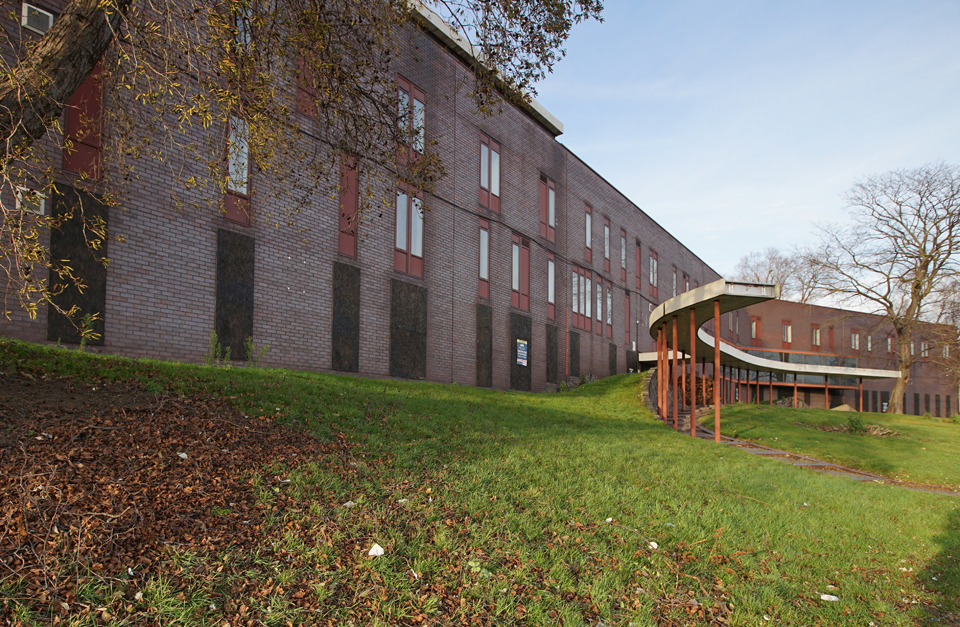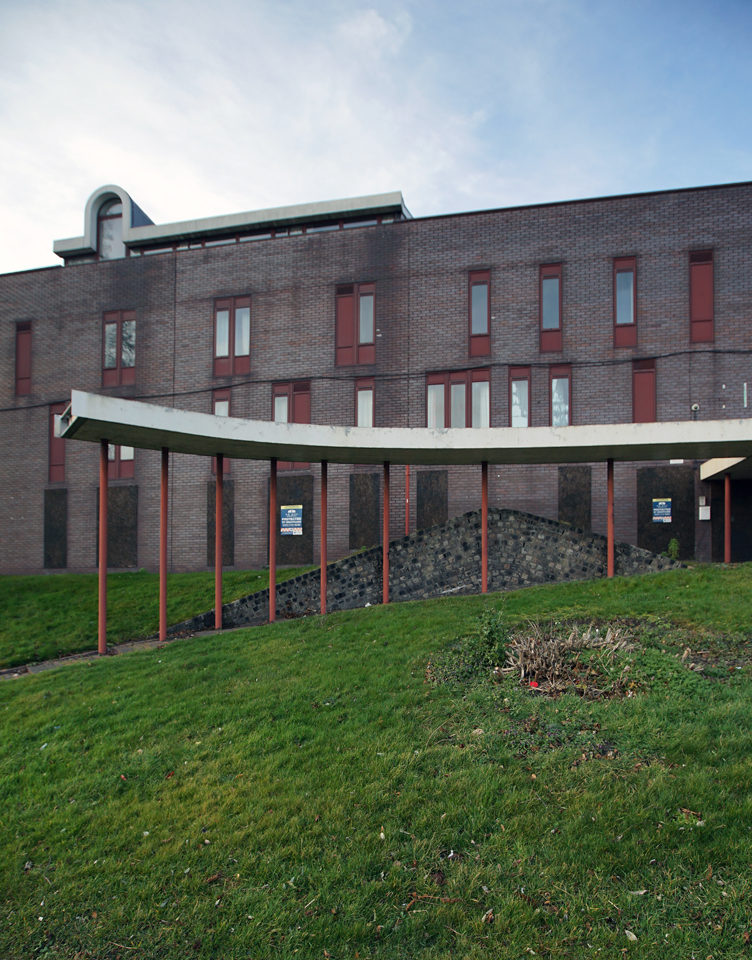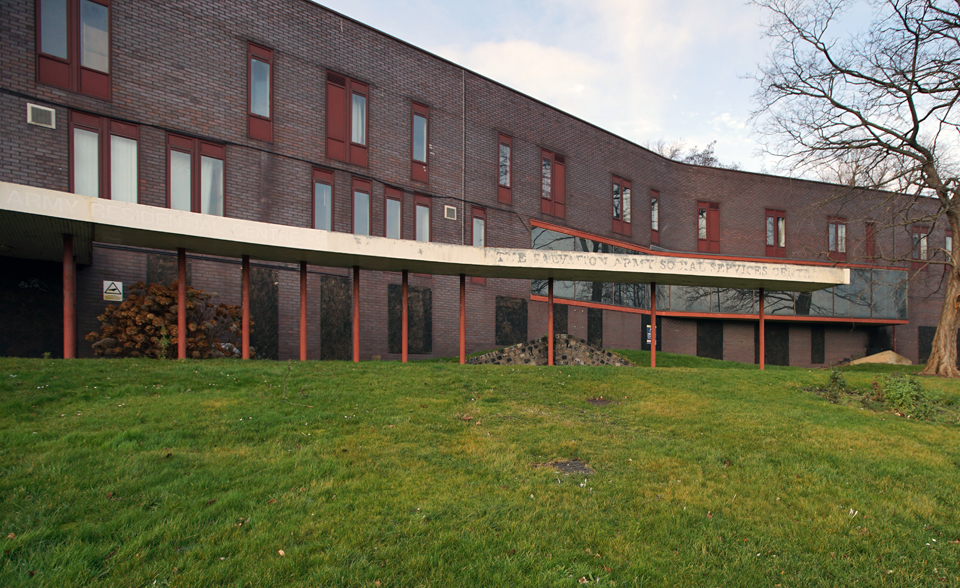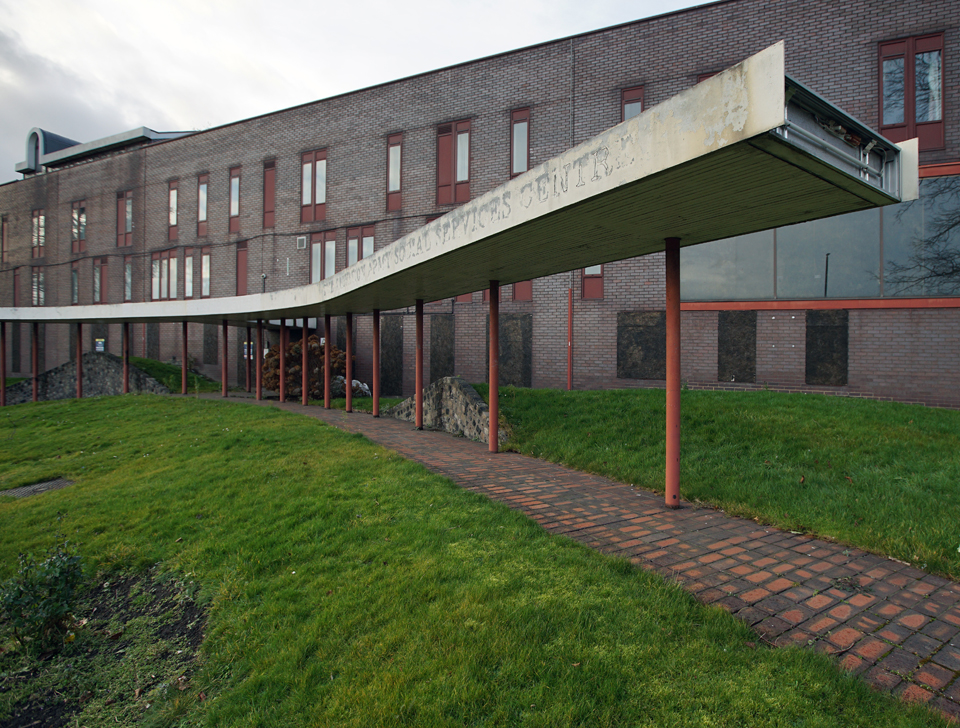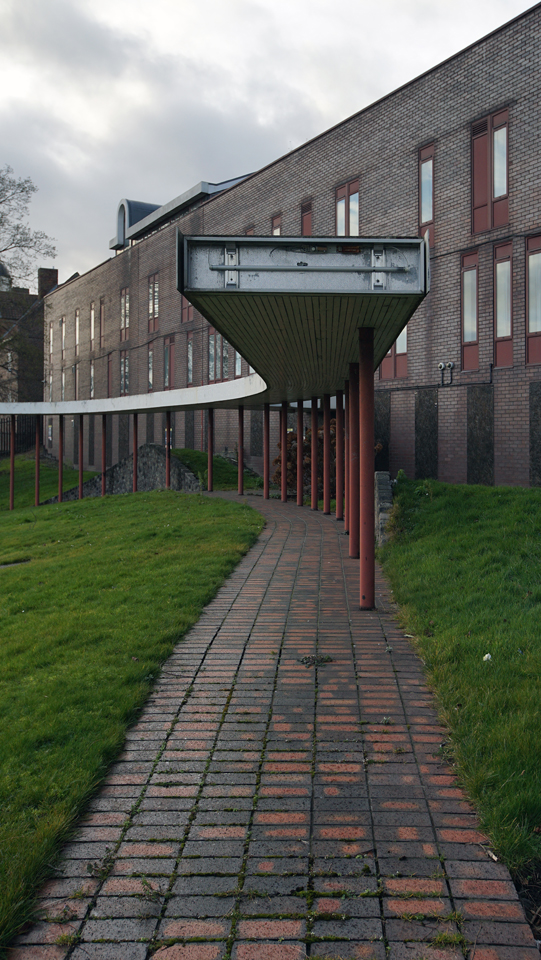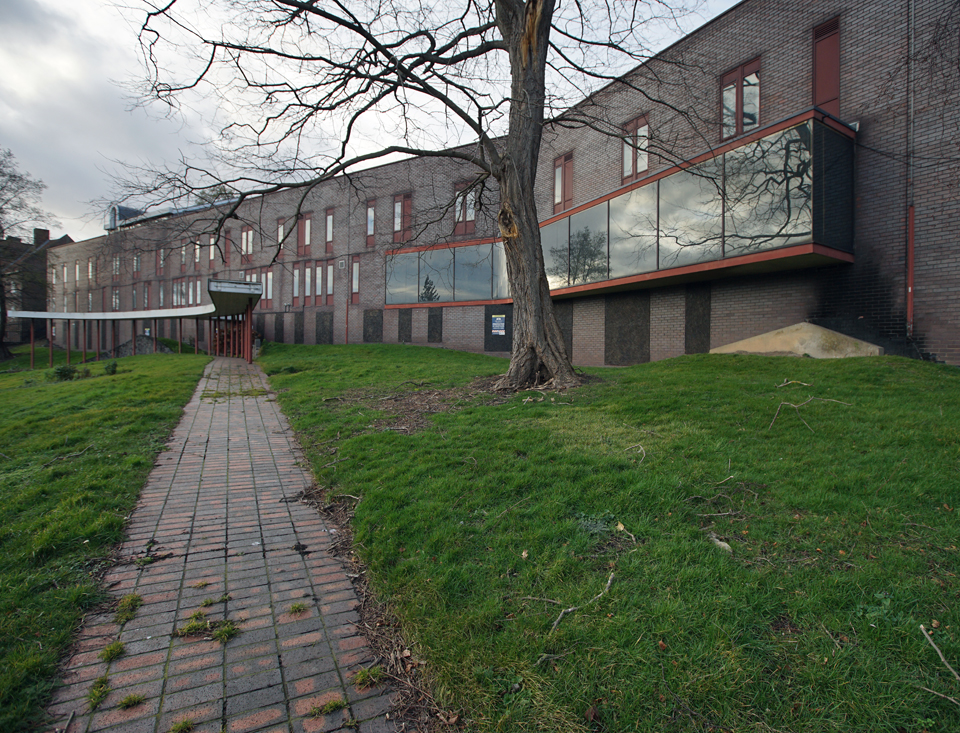Men's Social Services Centre for the Salvation Army
1974
This particular scheme is seen as concomitant with the view of Ryder and Yates’ body of work as extending the healthcare and welfare ethos of their forebears, particularly Berthold Lubetkin in whose office they met. Of course, the firm had other clients in various sectors, but it is fair to read a prevailing sense of social justice and a commitment to community in much of their work. Originally the scheme was designed as two parallel blocks, but planned changes to the line of the road led to the decisive curve in the block facing the River Tyne across City Road. In making such an adjustment, the sight line from the carriageway to the adjacent seventeenth century Keelman’s Hospital was preserved. The new building respected the eaves level of its older neighbour, whose domed clock tower was referenced in the form of the rooftop penthouse. Finished in a monochromatic blue brindle brick that was also used for the paviours, the sweeping curve and flush glazing was only interrupted by a section of the first floor that peeled away from the façade as it curved. Similarly accentuated was a narrow, sweeping canopy on a single line of circular section columns that gently drew visitors to the understated entrance. The sculptural language extended to the landscaping where small pronounced grass hillocks were faced in granite setts, their vertical swoop balancing and contrasting with those in the plan. Intended to home 184 men in dormitories as well as providing days rooms, a dining room, family centre and a small hospital service, the building was officially opened in January 1975. Part of the rear block was demolished in 2011 and in 2014 the Salvation Army vacated the premises. Despite its Grade II listing, at the time of writing (June 2022) it remains empty and boarded up.
